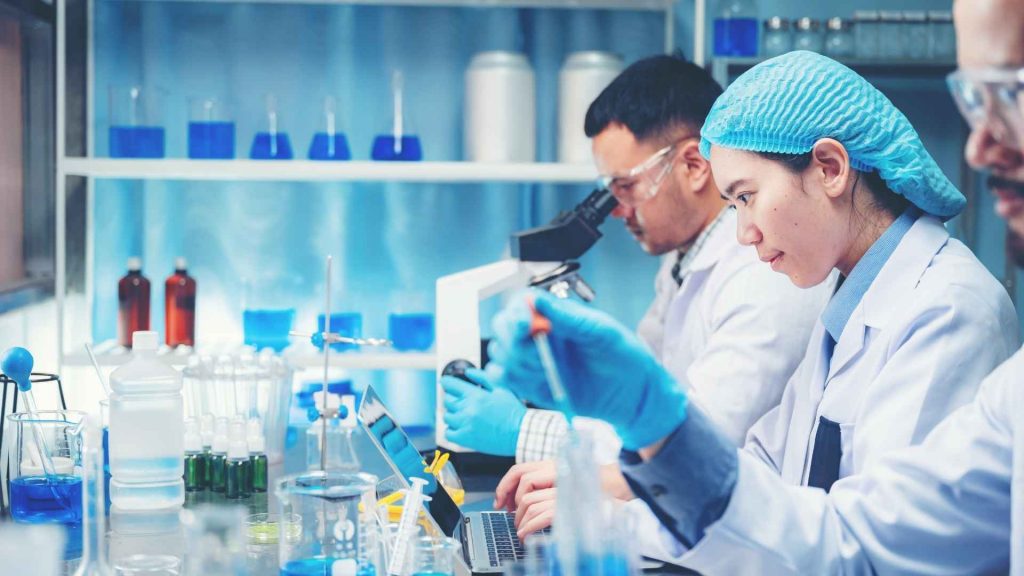
Medical laboratories are the crucibles where the bright minds of tomorrow's healthcare gain their first-hand experience. But how much of this learning is underscored by the spark of creativity, and how does it influence the medical innovations of the future?
Imagination, innovation, and invention are interlocked in a delicate dance that fuels our progress. Nowhere is this more evident than in the realm of medical education laboratories. It is here that creativity is not just appreciated but actively encouraged. Through creative thinking, we can nurture future physicians and researchers who can harness their ingenuity to bring forth disruptions in the realm of healthcare. With the combination of knowledge, creativity, and critical thinking, these sanctums of learning morph into factories of innovation.
The Importance of Creativity in Medical Education Laboratories
In the realm of medical training, the inclusion of creativity represents a crucial aspect significantly impacting the caliber of medical professionals we produce. Fostering creativity in education laboratories stimulates a realm of critical thinking, opening the pathway for groundbreaking discoveries and fostering a culture of innovative solutions.
Inhibitors of Creativity
Paradoxically, creativity is often stifled within conventional education systems, including medical education laboratories. Factors such as rigid curricular structures, conventional teaching methodologies, and the imperious prevalence of exams often inhibit the cultivation of creativity. Medical education centric on rote learning could lead to a propensity for memorization rather than understanding or applying the knowledge innovatively.
Reimagining Medical Education
It is vital to strike a balance between theoretical knowledge and inventive thinking to cultivate well-rounded healthcare professionals capable of addressing intricate medical scenarios. With such a comprehensive approach, medical education laboratories will be the breeding ground for future innovators in healthcare.
Innovation as a Result of Creative Thinking
Innovation and creativity are intimately intertwined in the world of medical science, serving as a dynamic duo that drives the advancement of knowledge and practices. Groundbreaking innovations in the field such as the artificial heart or non-invasive surgical techniques have been catalyzed by not just scientific acumen, but also creative thinking.
Those who dare to think differently, challenge conventions and visualise new possibilities are the ones that create breakthroughs in medical research. Creative minds push boundaries, forge new paths and reshape the future of medicine. Their innovative ideas, once turned into reality, revolutionize patient care, enhance outcomes and improve the quality of life.
In the narrative of medical progress, creators such as Israel's Dr. Gavriel Iddan are written in golden letters. Iddan's ingenuity led him to develop the capsule endoscopy, a major leap in non-invasive diagnostics. This is a compelling testament to how creative thinking often leads to novel solutions to improve healthcare.
Methods for Inspiring Creativity in Medical Education Laboratories
In today's rapidly evolving medical field, it is vital to foster an environment in medical education laboratories that cultivates and encourages creativity. One of the pivotal steps in achieving this is the creation of an open and inclusive environment. Encouraging diversity offers multiple perspectives and leads to innovative solutions to complex problems.
Incorporation of Art and Design
Interestingly, universities in Israel have begun to incorporate art and design into medical education, providing a creative outlet for students and facilitating a deeper understanding of human anatomy and physiology. Hands-on experimentation and exploration are pivotal in firing up the creative flux in the medical students.
Role of Technology in Enhancing Creativity
The rise of digital tools and technology, such as 3D printing and virtual reality, have revolutionized the way medical education is imparted. Utilizing these innovative tools, students are given the leeway to experiment creatively, consequently leading to advancements in patient care and medical research.
Examples of Innovative Projects from Medical Education Laboratories
The realm of medical education laboratories has served as the incubator for some truly innovative projects, providing a springboard for advancements in both theory and practical applications. For example, state-of-art medical simulators have been developed, enabling students to gain hands-on experience in a controlled and safe setting, enhancing both their competence and confidence.
Increasingly, virtual reality training programs are being provided, which allow students to better understand complex procedures and diagnoses. Additionally, creativity in these laboratories has brought us new educational tools and platforms, which serve to nurture the minds of tomorrow's medical professionals in an engaging and effective manner.
Research also plays an integral part, with many laboratories taking an interdisciplinary approach to tackle stubborn medical mysteries. These success stories truly underscore the possibility of groundbreaking innovation when creativity is free to thrive in medical education laboratories, a subject discussed earlier in this piece.
